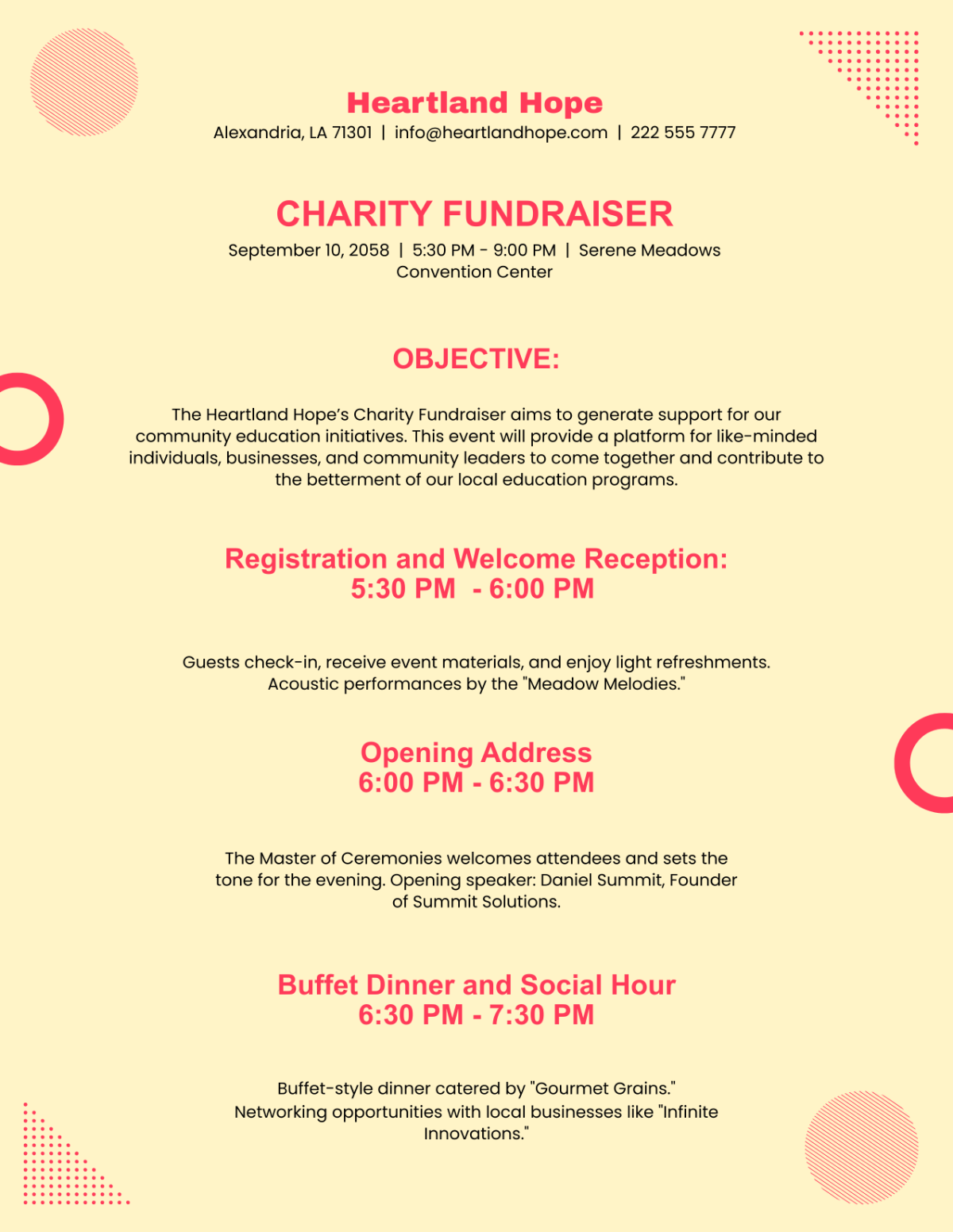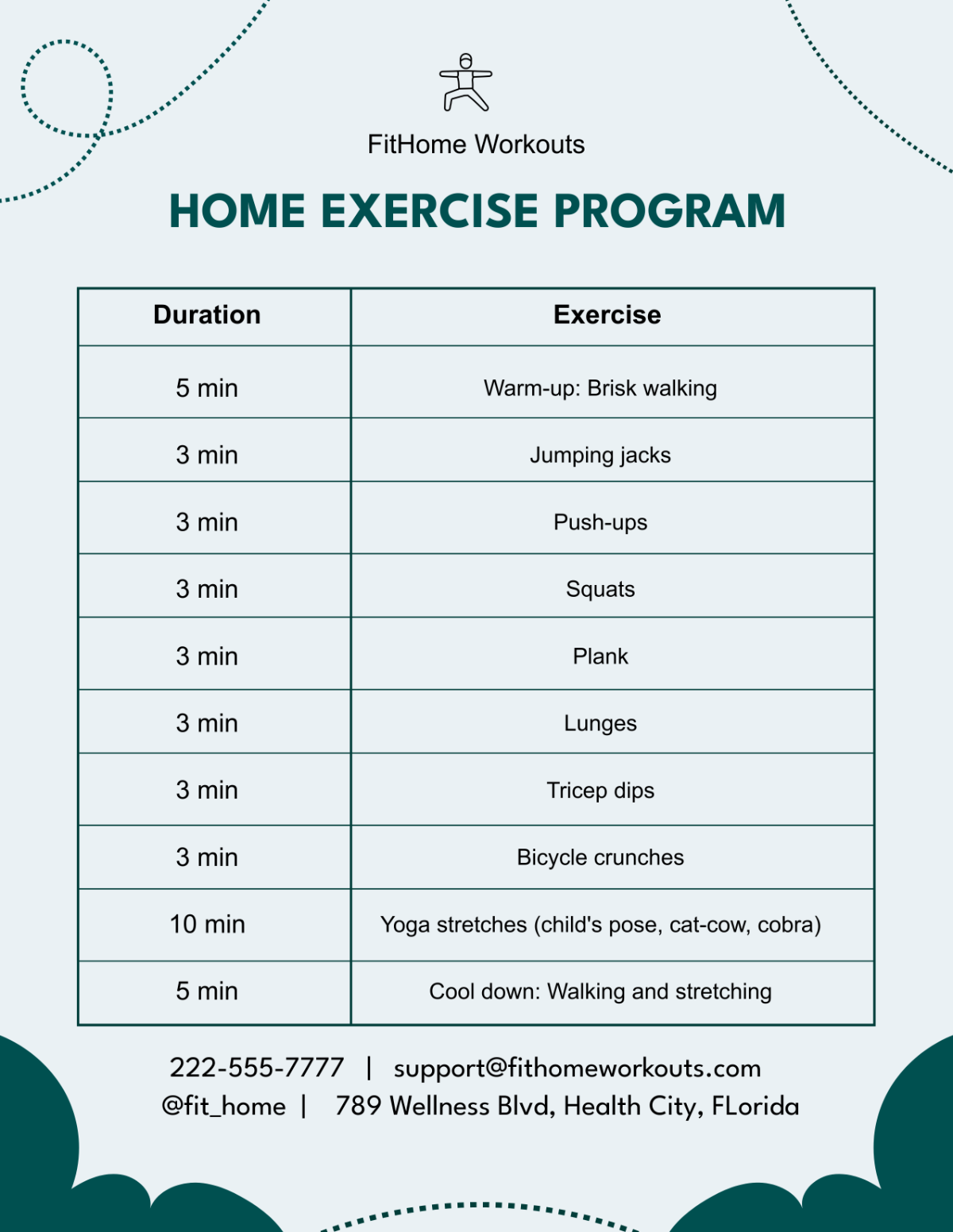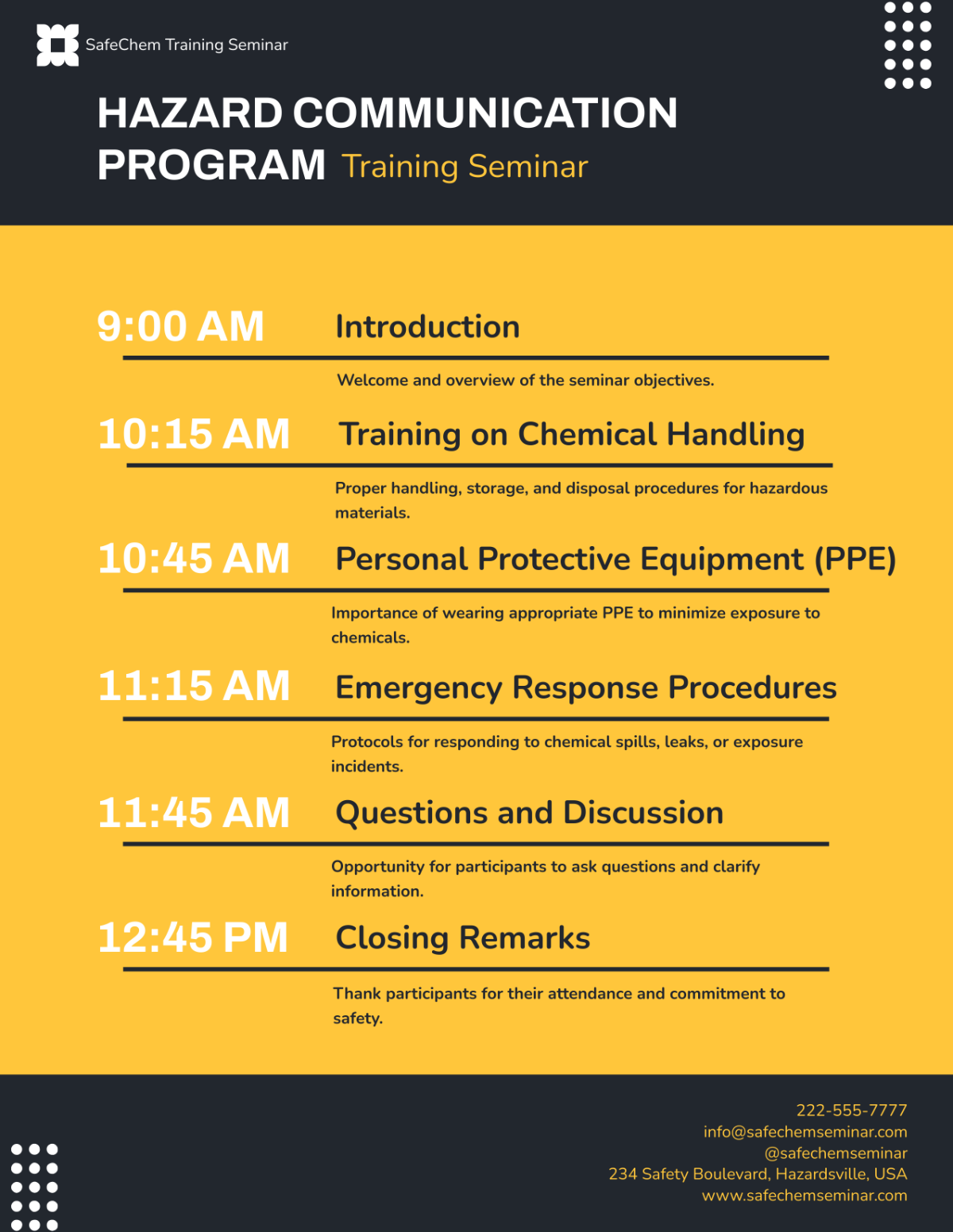Employee Wellness Program Business Plan
I. Executive Summary
[Your Company Name] recognizes the vital importance of employee health and well-being as key drivers of productivity and satisfaction in the workplace. Our Employee Wellness Program (EWP) is a strategic initiative designed to foster a culture of health and wellness among our staff. The program includes comprehensive health assessments, wellness education, fitness activities, mental health support, and personalized health coaching. Scheduled for launch on [MM-DD-YYYY], the EWP aims to enhance employee well-being, reduce healthcare costs, and improve overall workplace morale. This plan outlines the program’s structure, implementation strategy, and anticipated benefits, reflecting our commitment to creating a supportive and healthy work environment for all employees.
The EWP is not just an employee benefit; it's a strategic business initiative. Research consistently shows that well-designed wellness programs lead to a significant return on investment through reduced healthcare costs, decreased absenteeism, and increased productivity. Our program is tailored to meet the diverse needs of our workforce, encouraging active participation through engaging activities and comprehensive health support.
II. Company Overview
[Your Company Name], established in [Year], is a prominent innovator in the technology industry, with a vibrant workforce of over 500 dedicated employees. Headquartered in [Your Company Address], we have grown to include multiple regional offices across the [Country Name]. Our mission is to lead in technological advancement while nurturing a workplace that prioritizes the health, happiness, and productivity of our employees. We are known for our dynamic work culture, which blends ambitious professional goals with a supportive and collaborative environment.
Our growth trajectory has been marked by significant achievements and breakthroughs in technology. However, we recognize that our most valuable asset is our people. The introduction of the EWP is a testament to our commitment to investing in our employees' holistic well-being, ensuring that [Your Company Name] remains not only a leader in innovation but also a pioneer in employee care and satisfaction.
III. Program Goals and Objectives
The EWP at [Your Company Name] is designed with specific, measurable goals in mind. Our primary objective is to reduce employee healthcare costs by 15% within the first two years of program implementation. We also aim to enhance employee productivity and reduce absenteeism by 10%, based on current metrics. Furthermore, the program seeks to bolster overall employee job satisfaction and retention rates, creating a more engaging and supportive work environment. By establishing a culture of health and wellness, we aim to position [Your Company Name] as an employer of choice for health-conscious professionals.
Achieving these goals requires a multi-faceted approach. We plan to closely monitor and evaluate the impact of each component of the EWP, using data-driven metrics to assess effectiveness and make necessary adjustments. Employee feedback will be a critical aspect of this evaluation, ensuring that the program remains responsive to the needs and preferences of our staff. Ultimately, our success will be measured not just in numbers, but in the tangible improvement of our employees' quality of life and work satisfaction.
IV. Target Audience
The EWP is designed for all employees at [Your Company Name], encompassing various departments, levels, and roles within the organization. From entry-level staff to senior management, the program is tailored to address the unique health and wellness needs of our diverse workforce. Special consideration is given to ensure that the program is inclusive and accessible to everyone, regardless of their current health status, fitness level, or wellness knowledge.
In designing the program, we recognize the varied lifestyles, challenges, and preferences of our employees. As such, the EWP offers a range of options and resources, allowing each employee to engage in ways that are most meaningful and beneficial to them. Whether it's participating in a fitness challenge, attending a seminar on mental health, or receiving personalized health coaching, the program provides multiple entry points for engagement and improvement.
V. Program Components
The EWP comprises several key components, each aimed at enhancing a specific area of employee wellness:
A. Health Assessments
The cornerstone of our EWP is biannual health screenings. These screenings will provide employees with valuable insights into their health metrics, such as blood pressure, cholesterol, and BMI. The assessments will be conducted by qualified health professionals and will be strictly confidential. This data will serve as a baseline for personal health goals and program effectiveness evaluations.
B. Wellness Education
Education is a powerful tool in promoting wellness. Our program includes a series of monthly workshops and seminars covering a wide range of topics, including nutrition, stress management, sleep hygiene, and healthy lifestyle choices. These sessions will be led by experts in their respective fields and will be available both in-person and online to accommodate all employees.
C. Fitness Activities
Recognizing the importance of physical activity in overall health, the EWP provides subsidized gym memberships, on-site yoga classes every Wednesday, and a company-wide step challenge. These activities are designed to cater to different fitness levels and preferences, promoting a fun and engaging way to stay active.
D. Mental Health Support
Mental health is a critical component of overall wellness. Our program offers access to counseling services, mindfulness sessions, and mental health days. These resources aim to support employees in managing stress, anxiety, and other mental health challenges, fostering a supportive and understanding work environment.
E. Personalized Health Coaching
For employees seeking more personalized support, the EWP offers one-on-one sessions with certified health coaches. These coaches will work with employees to set realistic health goals, develop personalized plans, and provide ongoing support and motivation.
VI. Implementation Plan
Q2 [Year] |
Our focus will be on finalizing partnerships with health and fitness providers and developing a comprehensive marketing and communication plan. We will also begin training our HR team and managers to support the program's implementation and ensure they are well-equipped to answer any employee queries.
Q3 [Year] |
Marks the official launch of the program with an inaugural health fair. This event will serve as a platform to introduce the various components of the EWP, engage employees through interactive activities, and begin the biannual health assessments.
Q4 [Year] |
We will collect initial feedback from participants and make necessary adjustments to the program. This iterative process will ensure that the EWP remains relevant and effective.
VII. Marketing and Communication
Effective communication is key to ensuring high participation and engagement in the EWP. We will leverage multiple internal channels, including email announcements, updates on the company intranet, and regular departmental meetings to disseminate information. The launch event, a health fair, will provide a hands-on experience for employees to learn about the program's offerings.
Ongoing engagement is crucial for the program's success. Monthly newsletters and a dedicated section in the company app will keep employees informed about upcoming events, success stories, and health tips. We also plan to recognize and celebrate individual and team achievements within the program, fostering a sense of community and shared commitment to wellness.
VIII. Budget and Funding
The estimated annual budget for the EWP is [Amount]. This budget covers costs for health assessments, educational resources, fitness activities, and administrative expenses.
Health Assessments | Approximately [Amount] is allocated for biannual health screenings. This includes the costs of hiring healthcare professionals, procuring medical equipment, and setting up screening stations. |
Wellness Education | We have allocated [Amount] for fitness-related activities. This includes subsidies for gym memberships, fees for yoga instructors, and costs associated with organizing and running fitness challenges. |
Mental Health Support | Mental health initiatives will receive [Amount]. This budget will be used for contracting licensed counselors, organizing mindfulness and stress management sessions, and creating dedicated quiet spaces for relaxation and meditation. |
Personalized Health Coaching and Administration | The remaining [Amount] is set aside for personalized health coaching services and administrative costs, including program management, marketing, and communication efforts. |
A. Funding Sources
The funding for this initiative will primarily come from [Your Company Name]'s human resources budget. This allocation underlines our belief in the EWP as a strategic investment in our workforce. The program is anticipated to not only enhance employee health and well-being but also to yield long-term financial benefits for the company, including reduced healthcare costs, decreased absenteeism, and increased productivity.
B. Cost-Benefit Analysis and ROI
A rigorous cost-benefit analysis will be conducted to ensure the efficient use of resources. We anticipate a significant return on investment (ROI) from the EWP. Research in corporate wellness programs consistently shows positive ROI in terms of reduced healthcare costs, improved employee productivity, and lower turnover rates. For example, reduced medical expenses and absenteeism can significantly offset the program's cost. We aim for the EWP to be not just a cost center but a strategic investment that contributes to both employee welfare and the company's bottom line.
C. Ongoing Financial Management
The budget will be reviewed annually, with adjustments made based on program effectiveness, employee feedback, and evolving wellness needs. Regular financial audits and reports will ensure transparency and allow us to track the program's impact on both employee health and company finances.
IX. Risk Management and Evaluation
Implementing a new program like the EWP comes with its challenges. Key risks are:
Low participation rates
Privacy concerns regarding health data
Unforeseen costs
To mitigate these risks, we will ensure the confidentiality of health data, provide incentives for participation, such as wellness rewards, and maintain a transparent and open line of communication with all stakeholders.
The program's success will be measured using a variety of metrics. These include participation rates in various program components, healthcare cost savings achieved as a result of the program, employee satisfaction surveys, and changes in absenteeism rates. Regular program evaluations will be conducted to assess these metrics, allowing for ongoing adjustments and improvements.
We will also conduct focus groups and surveys to gather qualitative feedback from employees. This feedback will provide insights into the program's impact on employee morale, job satisfaction, and overall health. By continuously monitoring and evaluating the EWP, we aim to ensure that it remains a valuable and effective resource for our employees.
X. Conclusion
The Employee Wellness Program at [Your Company Name] represents a significant step forward in our commitment to fostering a healthy, productive, and engaged workforce. By investing in our employees' well-being, we are not only enhancing their quality of life but also contributing to the overall success and sustainability of our company. The EWP aligns with our core values and strategic goals, demonstrating our commitment to being a leader in both technological innovation and employee care.
This business plan lays the foundation for a comprehensive and dynamic wellness program that will evolve and adapt to meet the changing needs of our workforce. We are excited about the potential of the EWP to make a positive and lasting impact on the lives of our employees and the overall culture at [Your Company Name]. Our commitment to this program reflects our belief that a healthy and happy workforce is the cornerstone of a successful and resilient organization.

















































